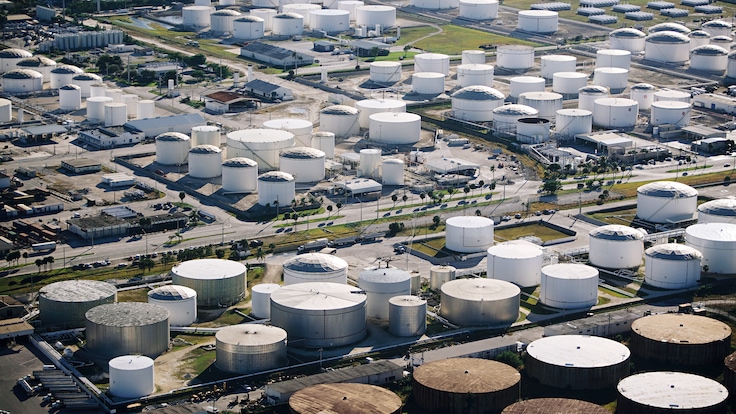CIRRUS for VOC Emission Control
Contain VOC Emissions and Comply with Evolving Regulations

Effective VOC Abatement for Cleaner Air
Terminal operators, oil and gas transportation companies, oil and gas storage companies, and oil and gas transfer operators are all seeking the most efficient and cost-effective method to control the emission of volatile organic compounds (VOCs) that are sometimes released into the atmosphere from a tank as a result of loading and unloading operations. Because VOCs can represent a health and environmental hazard and because their emission is strictly regulated, preventing the unwanted release of VOCs is an absolute imperative.
Using Cryocondensation to Generate Credits
There are a number of approaches to prevent or lower the release of VOCs into the atmosphere. Choosing the right solution is dependent on a number of factors, starting with the regulatory requirements. Our CIRRUS® units may be an ideal solution for operations that need to comply with the newest regulations. These cryogenic condensation (cryocondensation) systems are safe, cost-effective, reliable and environmentally sound, with a proven installed base across terminals, oil and gas complexes and chemical hubs worldwide. When implemented at a facility that chooses to recover and re-route emitted VOCs or reuse the vaporized nitrogen, cryocondensation can be a low-cost route to increased production safety. Emission credits may also potentially be generated through installation of such control systems. In VOC non-attainment areas, the value of emission credits is also increasing rapidly, and the generation of those credits through the installation of control equipment on existing point sources can represent a sellable asset.

Using Cryocondensation to Demonstrate Compliance
The benefits of cryocondensation extend beyond emissions abatement. An emission control system can also help demonstrate compliance with new and updated regulatory requirements, by enabling a facility to easily track and analyze emissions.
In the past, oil or gas operators may have used a thermal oxidizer to burn hazardous material. Today, facility operators are required to prove that they are combusting these emissions efficiently. A thermal oxidizer often requires different types of gas analyzers, such as stack gas analyzers, to prove that the combustion is efficient. At best, this can be an expensive solution. At worst, the solution may not work, causing the facility to shut down. A cryocondensation system, on the other hand, can monitor the outlet temperature of the abated emissions. Controlling to a pre-determined temperature may demonstrate that abated emissions are low enough to meet guidelines. This is a much simpler way to track emissions than combustion analyzers, stack gas analyzers and other methods commonly used to prove that a thermal oxidizer is running effectively.